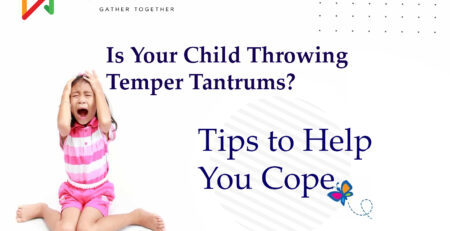How to Build a Marriage That Lasts: 5 Essential Principles for Long-Term Success
The statistics paint a sobering picture: while divorce rates have historically hovered around 50%, some marriages not only survive but thrive for five decades or more. What separates these enduring unions from the countless relationships that crumble under pressure? The answer isn’t luck, timing, or even compatibility—it’s the deliberate decisions smart partners make long before they say “I do.”
In an era where millennials are marrying later and actually driving divorce rates down to historic lows, there’s clear evidence that taking a more thoughtful approach to marriage selection and preparation pays dividends. Yet the sobering reality remains: second marriages face a 60% divorce rate, and third marriages crash at an alarming 73% rate. Getting it right the first time isn’t just preferable—it’s essential.
The difference between marriages that last and those that fail comes down to five fundamental principles that successful couples understand and implement from the very beginning of their relationship journey.
Principle 1: Choose Character Over Looks – The Foundation of Lasting Love
The first and perhaps most crucial decision in building a marriage that lasts centers on what truly matters when selecting a life partner. While physical attraction undeniably plays a role in initial romantic connection, smart partners look far deeper than surface-level beauty when making long-term commitments.
Why Character Trumps Physical Appearance
Physical attractiveness, while initially compelling, operates on a declining curve over time. The face that captures your attention at twenty-five will inevitably change by forty-five, fifty-five, and beyond. Character, however, operates on the opposite trajectory—it typically deepens, strengthens, and becomes more attractive with age and experience.
When evaluating a potential life partner’s character, focus on these revealing indicators:
How She Treats Service Workers: The way someone treats waitstaff, retail workers, customer service representatives, and other service providers reveals their true nature when they believe there are no social or professional consequences for poor behavior. A person who is rude, dismissive, or entitled with service workers will eventually treat you the same way when the honeymoon phase ends.
Stress Response Patterns: Everyone faces stress, but not everyone handles it with grace, maturity, and emotional regulation. Observe how your potential partner responds to traffic jams, work pressures, family conflicts, or unexpected setbacks. Does she remain calm and solution-focused, or does she become reactive, blame others, or shut down entirely? Stress reveals character more clearly than almost any other circumstance.
Word Integrity: Does she consistently follow through on commitments, both large and small? This includes showing up on time, keeping promises, honoring agreements, and maintaining confidentiality when appropriate. A person’s relationship with their own word is a direct predictor of their reliability as a life partner.
Value Consistency: Watch for alignment between stated values and actual behavior. Someone might claim to value honesty but regularly tell white lies for convenience. They might profess to care about health while consistently making poor lifestyle choices. Character is revealed not in what someone says they believe, but in how they actually live.
The Long-Term Character Assessment
Building a marriage that lasts requires moving beyond the carefully curated version of a person presented during early dating phases. True character assessment takes time and requires observing your partner across various circumstances and seasons.
Consider how she handles disappointment, success, conflict with friends or family, financial stress, health challenges, and moral dilemmas. The partner who remains consistent, ethical, and emotionally stable across these varied situations possesses the character foundation necessary for marriage longevity.
Remember that character defects rarely improve under the pressure of marriage—they typically become magnified. If you notice concerning patterns like chronic dishonesty, explosive anger, manipulation, or selfishness during the dating phase, these issues will likely intensify rather than resolve after marriage.
Principle 2: Build Shared Values Before the Altar – The Alignment Factor
The second critical principle for marriages that last involves ensuring fundamental value alignment before making lifetime commitments. While differences in preferences, hobbies, or personality traits can add interest and balance to a relationship, disagreements about core values consistently destroy marriages over time.
Identifying Non-Negotiable Values
Successful long-term couples invest significant time and honest conversation in exploring their alignment on major life decisions and philosophical foundations. These crucial areas require clear agreement:
Children and Parenting Philosophy: Do you both want children? How many? What are your views on discipline, education, religious instruction, and parenting roles? Disagreement on having children is obviously relationship-ending, but subtle differences in parenting philosophy can create decades of conflict even when both partners want kids.
Career Priorities and Ambitions: How important is career success versus family time? Are you both comfortable with the demands, travel, or lifestyle implications of each other’s professional goals? Will one partner prioritize home responsibilities while the other focuses on career advancement? These decisions affect everything from daily schedules to retirement planning.
Financial Values and Money Management: How do you each view saving, spending, debt, and financial risk? Do you agree on major purchases, charitable giving, and long-term financial goals? Money conflicts consistently rank among the top causes of divorce, making this alignment crucial.
Faith and Spiritual Beliefs: While interfaith marriages can succeed, they require careful navigation and mutual respect. More importantly, you need alignment on how faith will influence major decisions, child-rearing, community involvement, and life priorities. A deeply religious person and a committed atheist face significant challenges in building shared meaning and purpose.
Lifestyle and Social Values: Do you share similar views on work-life balance, social obligations, extended family involvement, and leisure activities? Some people prioritize quiet home life while others thrive on constant social engagement. Some value financial security while others prioritize adventure and experience.
The Values Conversation Framework
Building shared values requires moving beyond surface-level agreement to deep philosophical alignment. Use these conversation starters to explore critical areas:
- “What does a successful life look like to you in 20 years?”
- “How do you want to handle money in our marriage?”
- “What role should extended family play in our decisions?”
- “How do you envision balancing career and family responsibilities?”
- “What are your non-negotiable beliefs or values?”
Pay attention not just to the content of these conversations but also to the process. Does your partner engage thoughtfully with these topics? Can they articulate their values clearly? Do they show curiosity about your perspectives? Are they willing to compromise on preferences while maintaining core values?
When Differences Become Deal-Breakers
Some couples mistakenly believe that love conquers all differences, but research and experience consistently show that major value misalignment creates irreconcilable conflict over time. If you discover fundamental disagreement on children, faith, money, or life priorities, address these differences honestly rather than assuming they’ll resolve naturally.
Successful marriages require enough shared values to create common ground for major decisions while allowing enough differences to maintain individual identity and growth.
Principle 3: Lead Through Conflict – The Resolution Advantage
The third principle recognizing that conflict is inevitable in any long-term relationship, but how couples handle disagreement determines whether conflict strengthens or destroys their bond. Marriages that last are built by partners who learn to fight better, not partners who never fight at all.
The Conflict Reality Check
Every couple faces disagreements, misunderstandings, and conflicts throughout their relationship journey. The fairy tale notion of never fighting is not only unrealistic but actually unhealthy—it often indicates that one or both partners are avoiding important conversations or suppressing legitimate concerns.
The question isn’t whether you’ll face conflict, but whether you’ll develop the skills and emotional maturity to navigate disagreement constructively. Partners in lasting marriages understand that conflict, when handled well, actually deepens intimacy and understanding.
Essential Conflict Resolution Skills
Emotional Regulation Under Pressure: The ability to remain calm during heated discussions is perhaps the most crucial conflict resolution skill. When emotions escalate, rational problem-solving becomes impossible. Practice techniques like deep breathing, taking breaks when needed, and focusing on the issue rather than attacking your partner’s character.
Focus on Solutions, Not Blame: Productive conflict resolution always moves toward finding workable solutions rather than establishing who was right or wrong. Frame discussions around “How can we solve this?” rather than “Why did you do that?” This approach maintains partnership rather than creating adversarial dynamics.
Avoid Character Attacks: Criticism should target specific behaviors or situations, never your partner’s fundamental character or worth. The difference between “You always interrupt me during important conversations” and “You’re a selfish person who doesn’t care about anyone else” is relationship-defining.
Listen to Understand, Not to Win: Conflict resolution requires genuine curiosity about your partner’s perspective, even when you disagree strongly. Ask questions to clarify their position, repeat back what you’re hearing to confirm understanding, and acknowledge valid points even when you maintain different conclusions.
Take Responsibility for Your Contributions: Most conflicts involve contributions from both partners. Taking ownership of your role in creating or escalating problems demonstrates maturity and creates space for your partner to do the same.
Building Trust Through Conflict Leadership
Your partner needs to see that you can handle pressure, stress, and disagreement with grace and maturity before she’ll trust you with her future. This doesn’t mean being perfect or never getting upset—it means demonstrating consistent emotional leadership when relationships face challenges.
Conflict leadership involves staying focused on the relationship’s long-term health rather than winning individual battles. It means being willing to apologize when wrong, forgive when hurt, and prioritize resolution over being right.
Women particularly need to see that their partner can remain stable and solution-focused under pressure, as this creates security and confidence in the relationship’s ability to weather future storms.
When Professional Help Is Needed
Some couples benefit from learning conflict resolution skills through counseling or relationship education programs before marriage. This isn’t a sign of relationship weakness—it’s a wise investment in building communication skills that will serve you throughout decades of marriage.
Consider professional guidance if you notice patterns like escalating arguments, recurring conflicts over the same issues, personal attacks during disagreements, or avoidance of important conversations due to fear of conflict.
Principle 4: Marry Your Best Friend – The Companionship Connection
The fourth principle emphasizes that while chemistry and physical attraction might get you to the altar, genuine friendship keeps couples together through decades of marriage. The couples celebrating 50-year anniversaries consistently report that they genuinely like each other as people, not just as romantic partners.
Beyond Chemistry to Companionship
Initial romantic chemistry creates excitement, passion, and motivation to pursue a relationship, but these intense feelings naturally moderate over time. What remains after the initial butterflies fade is either a deep, abiding friendship or a relationship built on increasingly shaky ground.
Ask yourself these friendship-testing questions about your potential life partner:
- Do you genuinely enjoy spending time together without structured activities or entertainment?
- Can you talk for hours about various topics without running out of conversation?
- Do you find her company relaxing and energizing rather than draining?
- Do you share similar humor and laugh together regularly?
- Would you choose to spend time with this person even if romance weren’t involved?
- Do you respect her intelligence, judgment, and character?
- Are you curious about her thoughts, opinions, and perspectives?
The Companionship Test
Friendship in marriage goes beyond enjoying each other’s company during peak moments. True companionship means finding contentment and connection during ordinary, everyday experiences. Can you enjoy grocery shopping together? Do you look forward to discussing your day’s events? Are you comfortable with comfortable silence?
Consider how you feel after spending extended time together. Some couples report feeling energized and refreshed by their partner’s presence, while others feel drained or irritated after too much togetherness. The former indicates genuine friendship; the latter suggests compatibility issues that won’t improve with marriage.
Intellectual and Emotional Connection
Lasting friendships are built on mutual respect, shared interests, and intellectual connection. You don’t need to share every hobby or opinion, but you should find your partner mentally stimulating and emotionally supportive.
Pay attention to how conversations flow between you. Do you find yourself genuinely curious about her thoughts and experiences? Does she challenge you intellectually while supporting you emotionally? Can you share vulnerabilities, fears, and dreams without judgment or dismissal?
Growing Together vs. Growing Apart
Friendship-based marriages tend to weather life’s changes more successfully because the partners remain interested in each other’s growth and development. When marriage is built primarily on chemistry or circumstantial compatibility, couples often grow apart as they evolve individually.
Friends support each other’s personal development, celebrate achievements, and maintain connection through various life stages. This friendship foundation provides stability when external circumstances change—career shifts, health challenges, family stress, or other life transitions.
Principle 5: Don’t Rush to the Altar – The Time Investment Strategy
The fifth and final principle involves taking sufficient time to truly know your partner before making lifetime commitments. This means seeing her not just during peak moments and carefully curated experiences, but during ordinary, stressful, and challenging times when people reveal their authentic selves.
Beyond the Highlight Reel
Social media has created a generation accustomed to presenting carefully curated versions of themselves, emphasizing peak experiences while hiding ordinary struggles and flaws. The danger in relationships comes when we fall in love with someone’s “highlight reel” rather than their complete, authentic self.
You’re not marrying her best day, her most charming moment, or her carefully presented public persona. You’re marrying the person she becomes on Tuesday morning when the coffee maker breaks, when work stress peaks, when she’s fighting a cold, or when family drama creates emotional turmoil.
Essential Observation Periods
Smart partners invest time observing their potential spouse across various circumstances and seasons:
Stress Response: How does she handle work pressure, financial strain, health problems, or family conflicts? Does she remain emotionally regulated, or does she become reactive, manipulative, or withdrawn?
Daily Routines: What is she like during ordinary, mundane activities? Some people are charming during date nights but difficult to live with during everyday routines.
Illness and Vulnerability: How does she respond when sick, tired, or emotionally depleted? Does she become demanding, self-pitying, or grateful for care and support?
Anger and Frustration: Everyone gets angry sometimes, but not everyone handles anger constructively. Does she express frustration directly and fairly, or does she become passive-aggressive, explosive, or manipulative?
Success and Achievement: How does she handle personal victories or good fortune? Does success make her more generous and grateful, or more entitled and self-focused?
Interaction with Others: Pay attention to how she treats family members, friends, coworkers, and strangers. These relationships often predict how she’ll treat you after the initial romance fades.
The Seasonal Assessment
Ideally, couples should experience multiple seasons together before marriage—both literal seasons and metaphorical life seasons. This might include:
- Holiday stress and family dynamics
- Work or financial pressure
- Health challenges or personal setbacks
- Success and achievement periods
- Conflict with friends or family members
- Major decisions or life transitions
Each of these experiences reveals character, coping mechanisms, values, and compatibility in ways that can’t be observed during comfortable, low-pressure dating scenarios.
Red Flags That Time Reveals
Certain concerning behaviors often don’t emerge until relationships become more serious or committed. Taking time allows you to identify patterns that might not appear during early dating:
- Controlling or possessive behavior
- Emotional manipulation or guilt-tripping
- Inconsistency between words and actions
- Poor relationship with family or friends
- Financial irresponsibility or deception
- Substance abuse or other addictive behaviors
- Inability to handle criticism or feedback
- Excessive neediness or emotional instability
Quality Time vs. Quantity Time
The goal isn’t necessarily to date for a specific duration, but rather to accumulate enough shared experiences to make an informed decision about lifetime compatibility. Some couples might achieve this understanding in 18 months of intensive, varied experiences, while others might need several years.
Focus on depth and variety of experiences rather than simply calendar time. A couple who has navigated multiple challenges together might have better insight into their compatibility than a couple who has dated casually for several years without facing any significant tests.
Modern Marriage Success: Learning from Millennial Trends
Recent data reveals encouraging trends in marriage success rates, particularly among millennials who are applying many of these principles naturally. By marrying later in life, this generation is demonstrating the wisdom of taking time to develop emotional maturity, financial stability, and clear life direction before making lifetime commitments.
The Benefits of Marrying Later
Millennials who marry in their late twenties or early thirties often bring several advantages to their relationships:
- Emotional Maturity: Greater self-awareness and emotional regulation skills developed through independent adult experience
- Financial Stability: More established careers and financial foundation, reducing money-related stress
- Life Experience: Broader experience with relationships, living situations, and personal challenges
- Clearer Values: Better understanding of personal values, goals, and non-negotiables through adult experience
- Communication Skills: Professional and personal experience developing conflict resolution and communication abilities
Learning from Divorce Statistics
The stark reality of second and third marriage failure rates—60% and 73% respectively—underscores the importance of getting marriage right the first time. These statistics suggest that the skills needed for marriage success aren’t automatically developed through relationship experience alone.
Many people who divorce and remarry repeat similar patterns and make similar partner selection mistakes because they haven’t addressed the underlying issues that contributed to their first marriage’s failure. This reinforces the importance of the five principles outlined above: they address the foundational elements needed for marriage success regardless of previous relationship experience.
Implementing These Principles in Your Relationship Journey
Understanding these principles intellectually is different from implementing them practically in your own relationship journey. Here’s how to apply each principle effectively:
Character Assessment Implementation
Create opportunities to observe your partner’s character across various situations. This might include:
- Volunteering together for charitable causes
- Traveling together, especially when plans go wrong
- Spending time with each other’s families
- Handling stressful situations like job interviews or medical appointments
- Observing how she treats people who can’t benefit her socially or professionally
Values Alignment Process
Schedule regular, deep conversations about life goals, values, and expectations. Consider:
- Pre-marital counseling or relationship education programs
- Reading and discussing books about marriage, finance, parenting, or faith together
- Spending time with couples whose marriages you admire
- Discussing specific scenarios: “How would we handle it if…”
- Writing down individual goals and values, then comparing and discussing differences
Conflict Resolution Development
Practice healthy conflict resolution skills before major disagreements arise:
- Learn and practice active listening techniques
- Establish ground rules for disagreements (no name-calling, no bringing up past issues, etc.)
- Develop skills for managing emotional reactions (timeouts, breathing techniques, etc.)
- Seek feedback from trusted mentors or counselors about your communication patterns
- Address small conflicts promptly rather than letting them accumulate
Friendship Building Activities
Intentionally develop friendship alongside romance:
- Engage in activities you both enjoy that aren’t romantic (hobbies, learning, volunteering)
- Have regular conversations about topics beyond your relationship
- Support each other’s individual friendships and interests
- Create shared goals and projects that require collaboration
- Spend time with other couples whose friendships you admire
Time Investment Strategy
Structure your relationship timeline to include adequate assessment time:
- Resist pressure from others to accelerate your timeline
- Include variety in your shared experiences and challenges
- Don’t make major commitments during high-emotion periods
- Seek input from trusted friends and family about what they observe in your relationship
- Take breaks from constant togetherness to maintain individual identity and perspective
The Long-Term Perspective: Building Marriage That Lasts Decades
Successfully implementing these five principles creates the foundation for marriages that don’t just survive but thrive across decades. Couples who invest this effort upfront often report that their relationship continues improving over time rather than declining.
The Compound Effect of Good Choices
Like financial investments, good relationship choices compound over time. Character-based partner selection leads to decades of trustworthiness. Shared values create harmony in thousands of future decisions. Conflict resolution skills prevent small disagreements from becoming relationship-threatening issues. Deep friendship provides companionship through all of life’s seasons. Adequate preparation time prevents costly mistakes that might require divorce and starting over.
Avoiding the Second Marriage Trap
Given the high failure rates of subsequent marriages, investing effort in first marriage success provides both relationship and practical benefits. The emotional, financial, and logistical costs of divorce are substantial, and the statistics suggest that second marriages face even greater challenges.
By applying these principles thoroughly in first marriage selection and preparation, couples significantly increase their odds of creating lasting, fulfilling partnerships that eliminate the need for relationship do-overs.
Conclusion: The Choice Is Yours
Building a marriage that lasts isn’t about luck, perfect compatibility, or finding “the one.” It’s about making smart, intentional decisions throughout the partner selection and relationship development process. The five principles outlined here—choosing character over looks, building shared values, leading through conflict, marrying your best friend, and taking adequate time—provide a framework for making these crucial decisions wisely.
The encouraging news is that these principles are entirely within your control. You can choose to prioritize character over physical attraction. You can invest time in exploring values alignment. You can develop conflict resolution skills. You can build genuine friendship alongside romance. You can resist social pressure to rush important decisions.
The couples celebrating 50-year anniversaries didn’t get there by accident. They made deliberate choices, often early in their relationships, that set the foundation for decades of partnership, growth, and mutual support. The same opportunity exists for anyone willing to prioritize long-term relationship success over short-term gratification or social expectations.
Your future marriage’s success begins with the choices you make today in partner selection, relationship development, and personal growth. Choose wisely, invest thoroughly, and build intentionally. The marriage that lasts a lifetime is waiting for partners wise enough to create it.












